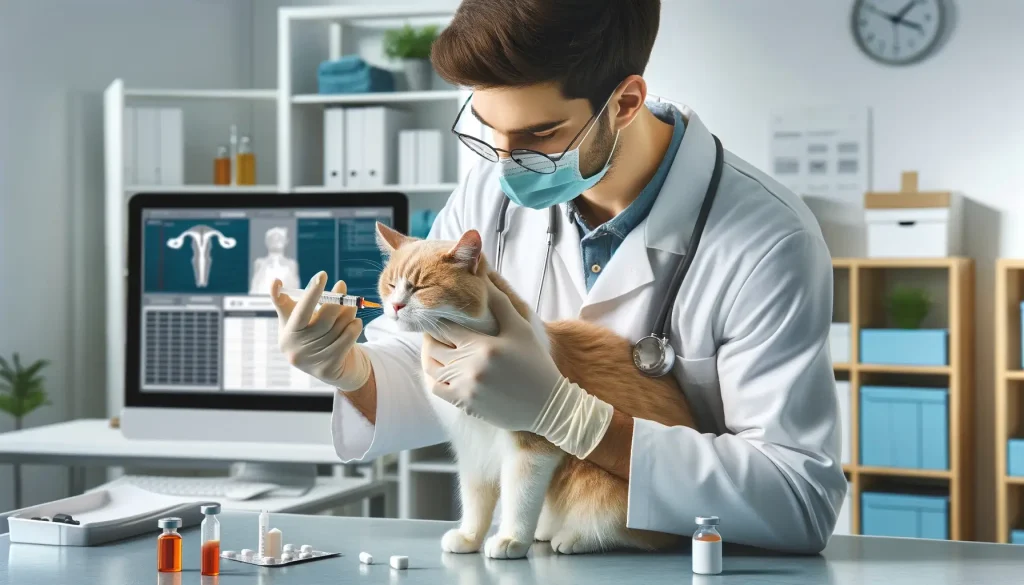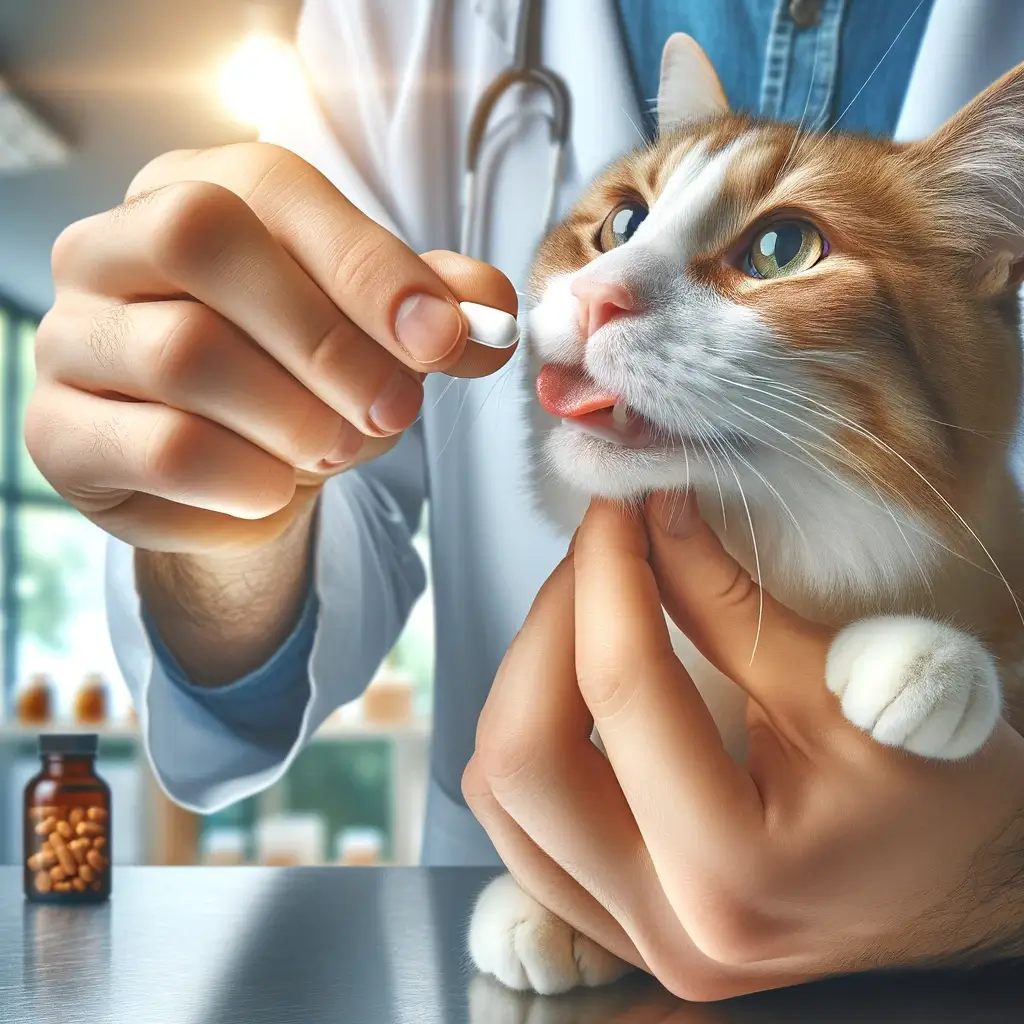
Steps for Deworming Your Cat
When it comes to caring for your furry friend, deworming is a vital aspect that can’t be overlooked. Whether you’ve recently welcomed a kitten into your home or you’re maintaining the health of an adult cat, understanding the process of deworming is key. With a variety of worms like roundworms, hookworms, tapeworms, and more posing risks, it’s crucial to follow the right steps and timings for deworming. But how exactly do you go about it, and what are the signs that your cat might be infected? Let’s break down the step-by-step guide to deworming your cat, backed by essential insights and tips to make the process smooth and effective.
Knowing when to start is your first step. For kittens, the deworming process should begin between 4-6 weeks of age, followed by subsequent doses at 8 weeks and 12 weeks old. This regimented approach during their early life stages is critical. But what about adult cats? They require deworming every 1-3 months depending on their lifestyle, such as if they are indoor or outdoor cats. Recognizing signs of worm infections is equally important. Symptoms like vomiting and diarrhea, seeing worms in vomit or feces, weight loss, and a dull coat can all indicate a worm infestation. Knowing what to look for can save you and your cat from more severe health issues down the line.
Prevention and treatment should always involve vet-approved medications like Panacur or Drontal, typically administered orally. In some cases, a praziquantel injection might be prescribed for more severe infestations. Moreover, maintaining cleanliness in your cat’s environment plays a significant role in preventing the occurrence of worms. Regular sanitization practices, like washing bedding and maintaining clean litter boxes, are straightforward but effective methods to keep worms at bay.
But amidst all these practical steps, how do you ensure the wellbeing of your cat through proper deworming methods without causing them stress or discomfort? Let’s delve into making deworming an easy process for both you and your pet.
Keeping Your Cat Happy and Healthy
Deworming your cat is not just a duty; it’s a necessary step to ensure their well-being and happiness. The presence of worms like roundworms, hookworms, and tapeworms can severely impact your cat’s health. Fortunately, with correct timing and the right approach, deworming doesn’t have to be a hassle for you or your furry friend.
For kittens, the deworming journey begins early. It is advised to start deworming a kitten between 4-6 weeks old. Follow up with additional doses at 8 weeks and 12 weeks old. This early intervention is crucial for their development. Continue deworming them every 4 weeks until they are 6 months old. Adult cats, on the other hand, require deworming every 1-3 months depending on their lifestyle, particularly if they spend time both indoors and outdoors.

Being vigilant about the signs of worm infections in cats is vital. Symptoms can vary but typically include vomiting, diarrhea possibly with visible worms, black and tarry feces, weight loss, and a dull coat. In more severe cases, you might notice skin lesions, abdominal distension, and in late stages, extreme weakness and dehydration.
When it comes to prevention and treatment, always opt for vet-approved medications. Common choices include Panacur (fenbendazole) and Drontal (praziquantel/pyrantel pamoate), usually given orally. For tougher cases, a praziquantel injection may be necessary. Remember, prevention is just as important as treatment. Keeping up with flea treatments and maintaining a clean environment can greatly reduce your cat’s risk of worm infestation.
Administering medication can be tricky. To give a pill, place your thumb and finger on opposite sides of the cat’s mouth, gently press down on the lower jaw, place the pill at the back of the mouth, then close the mouth and rub the throat to encourage swallowing. This method is generally effective and causes minimal stress to your pet.
Finally, the role of sanitization cannot be overstated. Regular washing of bedding, vacuuming rugs, and cleaning out kitty litter at least once a week are simple yet effective ways to keep worms at bay. Additionally, removing organic debris from your yard can further protect your cat from potential infestations.
Home Care vs. Vet Visits
Deworming your cat is a mix of home care practices and knowing when to seek professional help. It’s essential to recognize what you can do and when to consult a vet. Let’s break it down for a clear understanding.
What You Can Do at Home
First, familiarize yourself with the deworming schedule. Starting from 4-6 weeks old for kittens, and every 1-3 months for adult cats, depending on their lifestyle. Being proactive is key.
Watch out for symptoms like vomiting, diarrhea, or a dull coat. These signs might indicate worms. Early detection can prevent further health complications.
Using over-the-counter vet-approved dewormers is a straightforward method for home treatment. Administering pills might seem daunting, but with a gentle approach, you can effectively give your cat the medication without stress.
Sanitization plays a significant role in prevention. A clean environment can vastly reduce the chances of worm infestation. Regularly wash bedding, vacuum, and keep the litter box clean.


When to Visit the Vet
If your cat exhibits severe symptoms like extreme weakness, weight loss, and dehydration, it’s time to consult a vet. These signs could indicate a serious infestation that requires professional intervention.
For severe cases, a praziquantel injection might be necessary, which can only be administered by a vet. This is particularly true for stubborn or advanced worm infestations.
Uncertainty about the deworming process or the type of worms affecting your cat is another reason to seek veterinary guidance. A proper diagnosis ensures the right treatment plan, tailored to your cat’s specific needs.
Lastly, remember that preventative care, like flea treatments, can be discussed during vet visits. These measures are part of a holistic approach to keeping your cat worm-free.
Prevent Future Worm Woes
Keeping your cat worm-free is a priority for any pet owner. Focus on prevention to avoid future issues. Here’s how you can ensure your feline stays healthy.
- Start early with kittens. Begin deworming at 4-6 weeks of age. Follow up at 8 weeks and 12 weeks, then every 4 weeks until they reach 6 months old. For adult cats, schedule deworming every 1-3 months, depending on their exposure risks.
- Spot the signs. Look out for vomiting, diarrhea, worms in the feces, weight loss, and a dull coat. Early detection is crucial to prevent serious health problems.
- Choose vet-approved meds. Over-the-counter doesn’t mean safe for all. Opt for medications like Panacur and Drontal, known for their efficacy against worms.
- Maintain a clean living space. Regularly wash your cat’s bedding, vacuum your home, and keep the litter box clean. A clean environment is less inviting to parasites.
- Keep up with flea prevention. Fleas are often carriers of tapeworms. Regular preventative treatments can significantly reduce the risk of infestation.
- Administer pills properly. Place the pill at the back of the cat’s mouth and gently encourage swallowing by rubbing the throat. This method minimizes stress for your pet.
- Sanitize outdoor areas. If your cat spends time outdoors, clean organic debris from your yard to eliminate potential worm habitats.
- Consult your vet. When in doubt or if your cat shows severe symptoms, a vet visit is non-negotiable. Professional advice ensures proper treatment and peace of mind.

Types and Threats of Cat Worm Infection
Types of worms in cats are a major concern for pet owners. Knowing what you’re up against can help in effective prevention and treatment. Cats can be infected by roundworms, hookworms, tapeworms, and whipworms. While less common, lungworms, heartworms, and liver flukes also pose risks. Each type of worm requires a specific approach for treatment, emphasizing the need for vet-approved medications.
Roundworms and hookworms are often spotted in kittens and outdoor cats. These parasites can cause vomiting and diarrhea, with the possibility of the worms being visible in the feces. Tapeworms are frequently linked to flea infestations, underlining the importance of regular flea treatments.
Whipworms, though less common, can lead to serious health issues, including weight loss and dehydration. The more rare lungworms and heartworms require immediate attention, as they can be fatal if left untreated. Liver flukes, found in cats that hunt or eat raw fish, can lead to liver diseases.
Administering pills to your cat might not be enjoyable, but it’s often necessary. The technique of gently pressing down on the lower jaw, placing the pill at the back of the mouth, and encouraging swallowing by rubbing the throat minimizes stress for both you and your pet.
Lastly, the role of sanitization in preventing worm infestations cannot be overstated. Keeping your cat’s living area clean by regularly washing bedding, vacuuming, and maintaining a clean litter box is essential. For outdoor cats, removing organic debris from your yard can reduce the presence of parasites.
If your cat shows any symptoms of a worm infection, such as extreme weakness or sudden weight loss, it’s crucial to consult a licensed veterinarian. They can provide a proper diagnosis and recommend the best treatment plan. Following vet-approved preventative measures and treatments ensures your cat remains healthy and happy.
Beginner Guide to Raising Quail at Home
What are the Signs of a Dog Concussion?
What Causes Your Dog’s Ears to Smell Bad?
When your dog’s ears start to emit an unpleasant odor, it might leave you puzzled…
Methimazole Treatment for Cat Hyperthyroidism
Methimazole plays a crucial role in managing feline hyperthyroidism, a condition marked by an overactive…
Got Hummingbirds in your Backyard? Here’s How to Care for Them.
Why Does Your Cat Pee Outside the Litter Box?
Cat’s Litter Box Issues It’s not uncommon for cat owners to face the frustrating dilemma…




